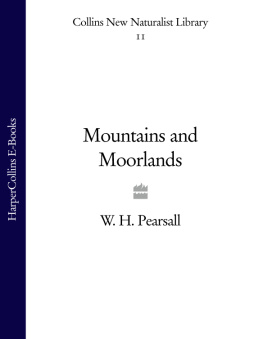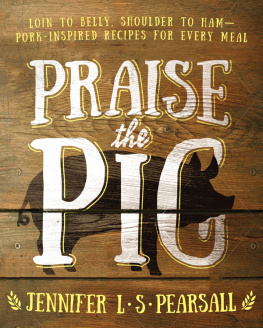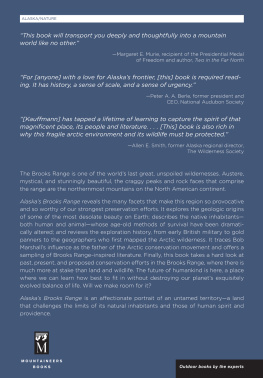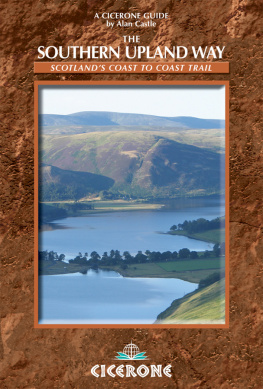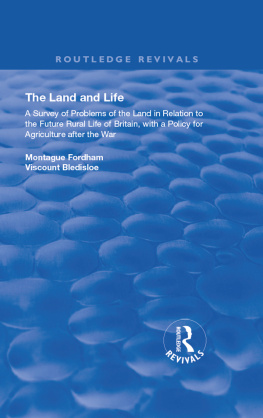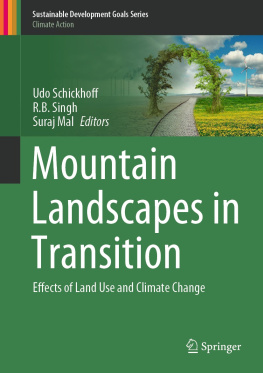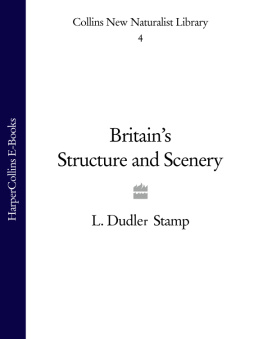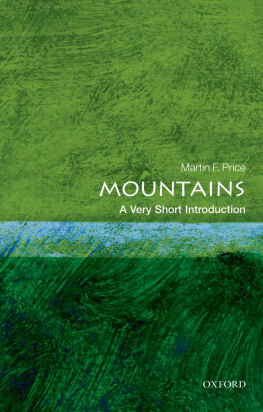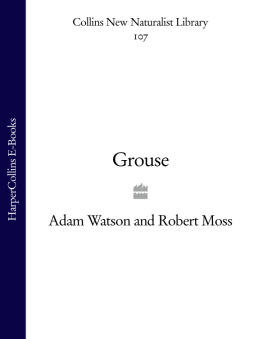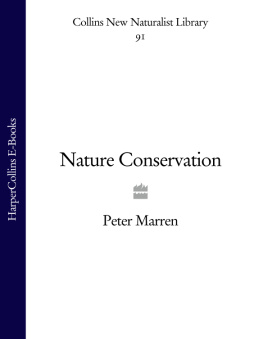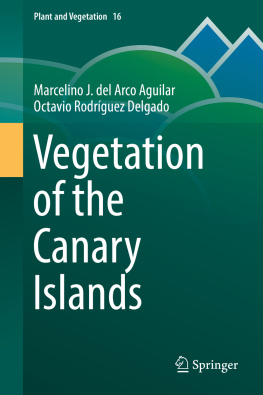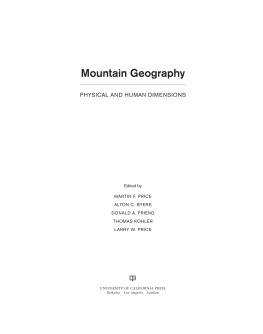

MARGARET DAVIES C.B.E., M.A., Ph.D.
JOHN GILMOUR M.A., V.M.H.
KENNETH MELLANBY C.B.E.
PHOTOGRAPHIC EDITOR:
ERIC HOSKING F.R.P.S.
The aim of this series is to interest the general reader in the wild life of Britain by recapturing the inquiring spirit of the old naturalists. The Editors believe that the natural pride of the British public in the native fauna and flora, to which must be added concern for their conservation, is best fostered by maintaining a high standard of accuracy combined with clarity of exposition in presenting the results of modern scientific research.

THERE are really two Britainstwo different countries, their boundary a line that strikes diagonally across England from Yorkshire to Devon. To the north and west of this line is the region of mountains and old rocks; to its south and east the newer, fertile land of the plains. These regions differ vastly in their climate, rocks, soils, scenery, plants, animalsand men.
It is of the mountains and moorlands that W. H. Pearsall writes. Moorland, mountain-top and upland grazing occupy over a third of the total living-space of the British Isles, and, of all kinds of land, have suffered least interference by man. Mountains and moorlands provide the widest scope for studying natural wild life on land.
In the present volume Professor Pearsall has brought together the results of over thirty years work among the high hills, the lakes and the moorlands of northern and western Britain. He is a botanist, but these pages show that animals have appealed to him almost as much as plants, a double interest that is rarer than it should be among naturalists. It is doubtful whether any other author could, single-handed, have presented such a well-balanced picture of the wild life of an area as Professor Pearsall has done in this volume.
Although he is now banished to the gently undulating south (he is head of the Botany Department at University College, London) the whole of Professor Pearsalls previous working life has been spent within call of the mountains and moorlands about which he writesat Manchester, at Leeds, and finally as Professor of Botany at Sheffield University. During this period he has made many outstanding contributions to ecological research, especially in the Lake District, but it is obvious from his book that the severely scientific discipline that these researches demand has by no means extinguished his deep love of the countryside in which they were carried out. On the contrary, the aesthetic and the scientific approaches have reinforced each other, as they shouldbut frequently do notin any fully developed naturalist.
For many people, perhaps the most arresting point in the book will be the idea that since the end of the Ice Age our mountains and moorlands have been subject to a process of inevitable change, one of the trends being towards the growth of bog and peat-moss at the expense of grassland and woodland, and towards a general impoverishment of soils; further, that during the last 3,000 years or so this and other changes have been progressively accentuated by mans interference, so that the difference between the natural history of our moorlands to-day and a bare two centuries ago is very marked. Indeed, work such as Professor Pearsalls is putting the history of our country in a new light. His chapter on the future possibilities of our uplands is equally striking.
Before the growth of modern transport most people in the south of England had little chance of knowing how those in the rest of Britain lived; there was little opportunity for studying and appreciating the lives of those who lived in the unspoilt countryside of the north and west. But to-day the mountains and moorlands of Highland Britain are within reach of every one, and we hope that Professor Pearsalls book will help to quickenand guideinterest in those parts of this country which now provide the main (almost the only remaining) opportunity for observing and investigating wild life and human problems in Britain as it was before modern mans heavy hand was laid upon it.
THE EDITORS

THIS book is an expression of many happy days in the field and is thus a tribute to the many naturalist friends who have consciously or unconsciously helped towards it by sharing their interests and enthusiasms. I should like to think that they may find some satisfaction in its dedication and that they would feel that they had in part contributed towards its creation.
When so much is owed to others, it may seem invidious to mention any by name. But the largest part of the animal population is composed of insects and for these specialised knowledge is unavoidable, even for a general review. I count myself extremely fortunate in having been able to obtain the sort of information I wanted, and also pertinent criticisms, from Mr. C. A. Cheetham, Professor J. W. Heslop Harrison and Mr. W. D. Hincks, the last of whom also verified the names according to the Check List of British Insects. Mr. W. H. R. Tams very kindly gave much help in the preparation of The Editors too have been generous in help and criticism; and, finally, a tribute must be made to the photographic skill of Mr. John Markham.
In spite of this, I fear that this may be thought an odd book, remarkable more for its omissions than its scope. It tries to integrate certain aspects of upland biology of which it may safely be said that about ten years intensive work would be required to do them reasonably well. The real integration, perhaps, is that it tells about some of the things that have interested its author.
W. H. P.
University College, London
PREFACE TO REVISED EDITION
Professor Pearsall died in October 1964. A lifetime of active work as a field ecologist, university teacher and administrator, ecological advisor and one of those most concerned with the foundation of the Nature Conservancy, had left him too little time to write. Mountains and Moorlands remains as his major work for the general reader; it is a classic, and must not be touched by a lesser hand. But in the twenty years since its publication, further research has inevitably modified certain concepts. When I was asked by Collins to revise Mountains and Moorlands for this edition, it seemed to me that Chapter 10, on ecological history, should be largely rewritten in the light of new work and the emergence of the technique of radiocarbon dating since 1950. Chapter 10 was partly based on the work of Dr. Verona Conway and myself, and the revised edition of this chapter has been approved by Dr. Conway and by Mrs. Pearsall. I am grateful to Miss Clare Fell for advice on changes in the interpretation of the archaeological record in North-west England since R. G. Collingwoods account of 1933, which formed the basis of Professor Pearsalls discussion of the ecological history of North-west England. In other chapters I have changed only a few sentences, to conform with new discoveries, and have provided additional bibliography to cover relevant work published since 1950. Chapter 15, a brief account of the work of the Nature Conservancy in Highland Britain, has been added to the book because of Professor Pearsalls concern with the Nature Conservancyhe was for many years Chairman of its Scientific Policy Committeeand because of the relevancy of the work of the Conservancy to the matters discussed in Chapter 14 of
Next page
